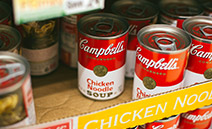
Archives
Contribute
|
|
Recovery Help For Homeowners
|
|
Stephen Friree
08/15/2019
Whether
it’s a major hurricane that destroys entire homes or a low-grade quake
that causes a minor foundation crack, nearly everyone will encounter the
power of Mother Nature – and the costs associated with it – at some
point. According to a recent online study
conducted by The Harris Poll on behalf of post-disaster financial
recovery program Project Porchlight, nearly three-fourths (71%) of
Americans experience a financial burden when affected by a natural
disaster. Forty-two percent incurred out-of-pocket expenses
not covered by insurance, while 48% tapped savings or retirement funds
and 36% used credit cards or personal loans to finance their recovery.
No matter where you live or what your risk level is for being affected
by a natural disaster, it’s critical to be prepared on all fronts.
Taking precautionary steps to aid your future recovery and knowing what
to do in the aftermath of a disaster will increase
the odds of rebuilding both your physical home and sense of personal
well-being more quickly.
Here are a few suggestions to get you started on the path to preparedness:
|
|
|
 |
Crucial Contacts
While the radio and local media often provide information regarding
available assistance during and after a disaster, it’s a great idea to
have that data at your fingertips beforehand. Save the numbers of
emergency assistance agencies such as the American Red
Cross in your cell phone contacts. Get and store the numbers of your
immediate neighbors so you can keep tabs on each other during an
emergency. Many pets become afraid during the commotion of a hurricane
or earthquake and escape the house, so having your
local animal control number handy can be a lifesaver if you have to
track them down.
|
|
|
|
 |
Create a Kit
A solid survival kit is one of the most valuable things to have at the
ready when calamity strikes. Gather household basics such as gallons of
water (one per person per day, for at least three days), non-perishable
foods for both people and pets, flashlights,
first aid kit and a battery powered radio with extra batteries. Include
any prescription medications, as well as other health-related needs.
Store items in airtight plastic bags and put the entire supply kit in
one or two easy-to-carry containers such as plastic
bins or a duffel bag.
|
|
|
|
 |
Document Your Property
When you’re forced to evacuate during a disaster, there’s little or no
time to gather together important documents and proof of ownership of
valuable items. So, well before there’s any indication of an emergency,
take time to gather together important papers
such as birth certificates, passports, insurance policies and your
latest mortgage statement to ensure you have contact info for your
mortgage servicer. Take photos or a video of every room in your house,
focusing on walls, cabinets and large appliances.
|
|
|
|
 |
Realize Your Risk
Most of us understand the need for homeowners insurance. However, many
people are underinformed when it comes to choosing the type of coverage
that will protect them when a flood or other natural disaster happens.
The National Association of Insurance Commissioners
(NAIC) started the #YourRiskIsReal campaign as part of an ongoing
effort to educate consumers about flood risks and the need to consider
purchasing flood insurance. Their website (NAIC.org) offers a short,
interactive What the Flood! quiz that presents complex
insurance concepts in easy-to-understand terms. Answers to questions
such as “If a hurricane floods your car, do you file a claim with auto
or home insurance?†can help reveal misconceptions you may have about
what kind of protection you need, and how to use
it to its fullest advantage.
|
|
|
|
 |
Make the Call
Your mortgage servicer should be one of the first calls you make after a
disaster. If you live and work in an area impacted by a storm, flood or
other natural catastrophe, you could be eligible for assistance with
your mortgage loan, such as late charge waivers
and suspension of negative credit reporting. If your home is moving
toward foreclosure, a moratorium could be placed on the proceedings to
allow time to reevaluate. But if your home loan is in good standing, an
agreement to temporarily pause mortgage payments
(forbearance period) might be granted. Your servicer has your best
interest in mind, and is there to work with you to ensure that you’re
able to regroup as quickly as possible. | | | |
 |
|
You may also access this article through our web-site http://www.lokvani.com/
|
|






